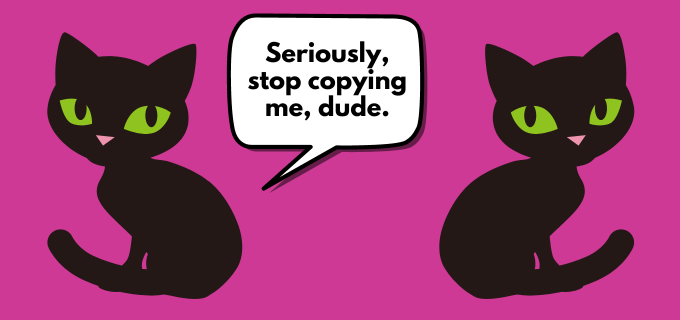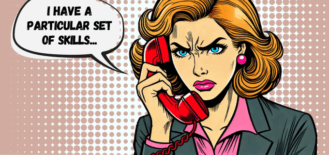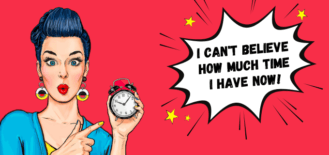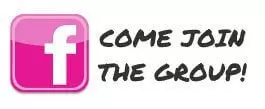Another great quick-win task to suggest to your clients is monitoring for plagiarism. This is actually something my own Virtual Assistant does for me every month as I like to know my content isn’t being used without my permission. Not only is this a great service to offer clients, but you can also check to see if your own website content is being stolen.
About the Quick Win series
I decided to create this Quick Win series because I realised many Virtual Assistants are sitting around waiting for their clients to give them tasks instead of making work for themselves.
In order to be a successful, irreplaceable VA you need to be seen as an invaluable resource by your clients.
And your value is nothing to do with your rates.
In the eyes of your clients, your value is not only to help their business run smoothly but also to find ways to actively improve it.
Saving or making your clients time and money will obviously result in more income, but it also means your clients will pay you anything just as long as you don’t leave them!
There are many ways you can add value to a client’s business and the purpose of the Quick Win series is to provide suggestions for just a few of them.
Okay, now let’s move on to hunting down and destroying plagiarists!
Plagiarism vs copyright infringement
Copyright infringement and plagiarism are often confused with each other because they both involve the unauthorized use of someone else’s work.
However, they are two different concepts with different implications and consequences.
What is plagiarism?
Plagiarism is presenting someone else’s work as your own without giving proper attribution or credit.
Plagiarism is commonly associated with academic and journalistic fields but it can happen in any scenario where original work is produced and it can damage a person’s professional reputation.
What is copyright infringement?
Copyright infringement is a legal concept that involves violating the rights of a copyright holder.
When a person creates an original work, they automatically have exclusive rights to that work, including the rights to reproduce, distribute, display, or perform it. If someone else uses that work without permission in a way that infringes on these rights, it constitutes copyright infringement.
The penalties for copyright infringement can be severe and may include hefty fines and potential jail time.
So, while both involve using someone else’s work without permission, plagiarism mainly refers to an ethical violation related to the attribution of work, and copyright infringement refers to a legal violation of a copyright holder’s exclusive rights.
It’s possible for a single act to be both plagiarism and copyright infringement, depending on the specifics of the situation.
In this article, I will be referring to copying content as plagiarism.
Why you should monitor your client’s website for plagiarised content
There are many good reasons why checking for plagiarism will benefit your client and these can be presented to them when you suggest you add it to your monthly task list.
To protect their intellectual property (IP)
As mentioned in the section above, your client’s website content is their intellectual property and if someone is copying it without permission, they’re essentially stealing.
They’re also benefiting from your client’s hard work, creativity, and investment, which is not only unfair but in many jurisdictions, illegal.
To maintain their SEO and search engine ranking
Because search engines like Google and Bing penalise duplicate content, if the same content appears on multiple sites, the search engine will struggle to decide which version is the most relevant to a given search query.
This will eventually result in lower rankings for all of the versions – including the original – and if the other website has a higher authority, it could even result in their post ranking higher than your client’s.
To preserve their reputation
If your client’s content appears on another site without proper attribution, it can confuse readers and dilute their brand reputation. People may even assume your client is the one who has plagiarised content from the other site.
How to detect plagiarised content
This is how it works for my own business.
Each month, my Virtual Assistant heads on over to the Copyscape online plagiarism checker website and enters the URLs of my most popular posts to see what comes up.
She then adds any “low-level” plagiarism to our shared Trello board for me to review and flags any blatant plagiarism so it can be dealt with immediately.
I define “low-level” plagiarism as maybe just one paragraph where the content is similar to mine. I know they’ve ripped it from my site but it’s edited enough to not be a major problem. Blatant plagiarism is when they’ve stolen entire articles or paragraphs and haven’t changed a single word.
It’s funny because sometimes they’ve not only copied my content word for word but they’ve even included the internal backlinks too – what idiots!
Note: there are a couple of other websites but Copyscape is the one I use.
What to do if your client’s content has been plagiarised
If the plagiarised content is just a small part of one paragraph, your client may decide it’s not worth the time and hassle of taking it further.
However, if they do decide to take action these are the steps you should take.
- First, take screenshots of the plagiarised copy from the offender’s website to use as evidence in case you need to contact their hosting company.
- Then, send an email to the plagiarist giving them three working days to change or remove the content. I’ve provided the email template for you below.
I’ve been through this process a number of times and in my experience, the website owner (ie lazy, uncreative plagiarist) usually edits or removes the plagiarised content straight away – commonly using a freelance content writer as an excuse.
However, if they fail to comply with your request after three working days, find out who hosts their website by visiting Who.is and report them.
In my experience, the perps’ hosting company usually takes down their entire website within a couple of days… which is incredibly satisfying.
Plagiarism and copyright infringement email templates
These are the two email templates I use to get their cheating website removed from the internet forever. You can write these emails for your client but they should look as if they came directly from your client rather than their VA.
Your email to the plagiarist
To whom it may concern,
I’ve been reviewing your website and have noticed that much of the copy has an uncanny resemblance to what I have on my own site – (paste the link of the copied page of your client’s website here)
I understand that it can be difficult to know what to write when coming up with marketing text and I’m flattered you would copy me, but I’m sure you’ll agree that the content is far too close to what I wrote myself and is bordering on plagiarism.
Please edit your website and any other online profiles, including LinkedIn, if you’ve used the same copy there so that it does not mirror my own website to ensure there are clear differences.
I look forward to seeing the changes within the next three working days.
(Your client’s email signature)
Your email to the plagiarist’s hosting company
If the plagiarist does not edit or remove the plagiarised content within three working days then send this email to their hosting company.
The content of this email is very specific and the details you need to provide were given to me by the hosting company themselves.
To whom it may concern,
I have discovered that the website (insert URL of offending website) has copied my own website text (insert your client’s website URL) almost word for word. I have attached screenshots of (insert name of offender’s website) website for your reference.
As you can imagine, I am very unhappy about this and understand that (insert name of offender’s hosting company) as the website’s host can intervene.
Therefore, please accept this email as proof that I have provided details relating to the identification of the copyrighted work I have discovered to be infringed, and that I have also given all necessary links to provide (insert name of offender’s hosting company) with sufficient information to locate the material in question.
I confirm, in good faith, that the use of my wording in the matter detailed in this email, has not been authorised by me.
All information in this notification is accurate and I verify that I am the owner of the (insert the name of your client’s website here) website and all content contained within it.
If you need any further information from me so we can resolve this swiftly, please do let me know. My contact details are listed below.
(Your client’s email signature with contact details)
** Don’t forget to attach the screenshots you took from the plagiarist’s website!
Conclusion
Regularly checking to see if your client’s content has been plagiarised is a win-win for both of you – and now you know how to do it! The method outlined above is the one I use myself and it hasn’t failed yet.
The plagiarist has either removed the content or their hosting company has removed their website.
So now not only do you now have a new service to offer your clients, but being proactive and suggesting ways you can improve and protect their business makes it clear that you are actively invested in its success.
And THAT is where your value lies.
 |
Looking to start your own VA business?If you want to become a Virtual Assistant and would just like someone to tell you what to do and how to get work, then sign up for my DIY VA course today. With lifetime access and an incredible trainee-only support group, it’s my job to help you succeed. |





Leave a Reply